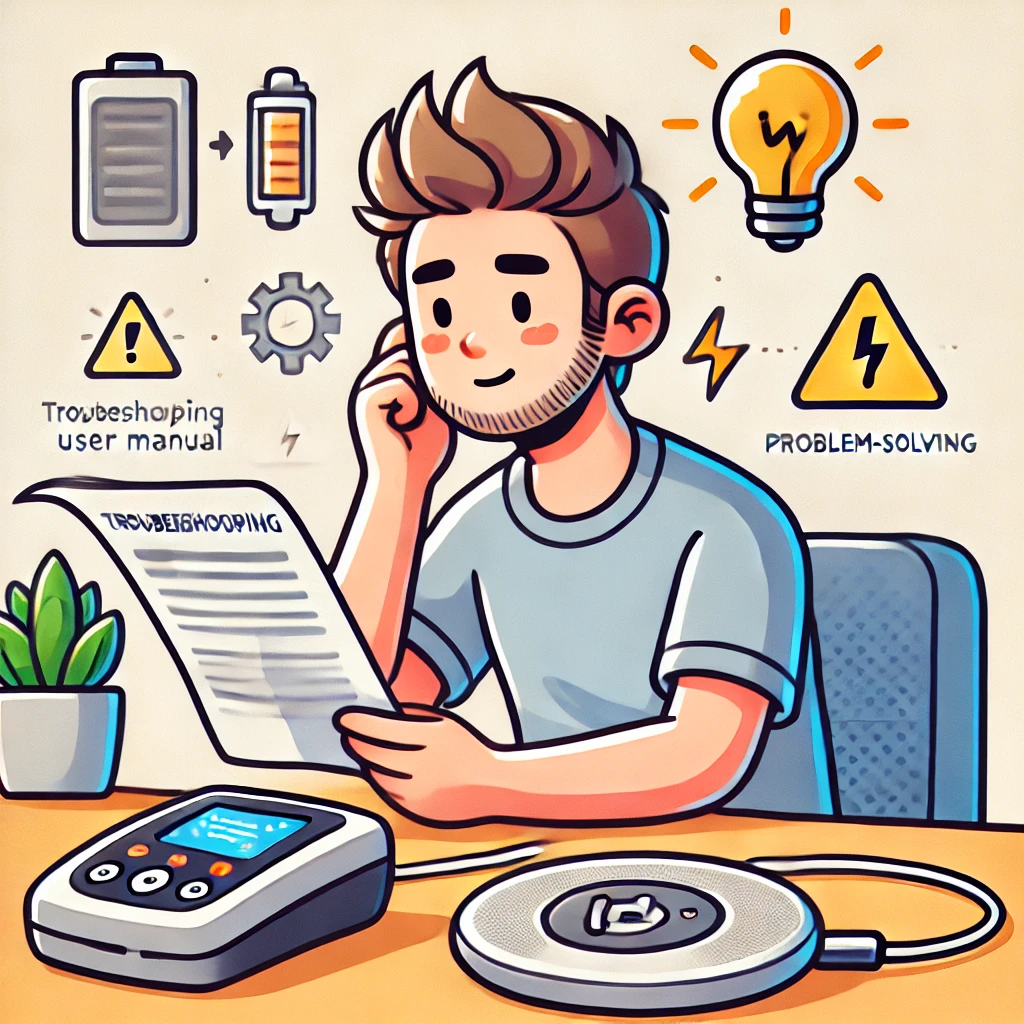Technology
vBloc Won’t Charge or Turn On: Troubleshooting Battery Issues

The vBloc Therapy System is a medical device that has brought significant relief to many people dealing with obesity by helping control hunger signals through vagus nerve stimulation. However, like all electronic devices, the vBloc Therapy System can sometimes encounter issues, particularly when it comes to charging or powering on. If you’re experiencing problems such as your vBloc won’t charge or turn on, this blog will guide you through the possible reasons and troubleshooting steps to resolve the issue.
Understanding the vBloc Therapy System
Before diving into the specifics of troubleshooting, it’s essential to understand what the vBloc Therapy System is and how it works. The vBloc Therapy System consists of an implantable device that helps regulate hunger signals to the brain by intermittently blocking vagus nerve activity. This device, also known as an Implantable Pulse Generator (IPG), requires regular charging to maintain its functionality.
The external components of the vBloc system include a charger and a charging coil, which are crucial for keeping the IPG powered. If the system fails to charge or turn on, there could be a variety of underlying causes—ranging from issues with the charging equipment to problems with the device itself.
Common Reasons Why vBloc Won’t Charge or Turn On
There are several potential reasons why your vBloc device might not be charging or turning on. These causes can include issues with the charging cable, the alignment of the charging coil, battery degradation, or even environmental factors. Let’s take a closer look at some of the most common reasons:
- Misalignment of the Charging Coil: One of the most common reasons for charging failure is the misalignment of the external charging coil with the internal device. Proper positioning is critical for the transfer of power from the external charger to the implanted device.
- Damaged Charging Cable or Adapter: A damaged cable or adapter can also prevent the device from charging. If the charging cable or adapter is faulty, it will not deliver the required power to the IPG.
- Battery Depletion or Degradation: Over time, batteries can degrade and lose their ability to hold a charge. If the vBloc device’s battery is completely drained or has degraded, it may not turn on or charge effectively.
- External Charger Issues: Problems with the external charger or its components, such as the charging coil, could also be responsible for charging failures.
- Software Glitches: Occasionally, software or firmware issues could prevent the device from functioning correctly. A software reset or update may be required to resolve these issues.
- Environmental Interference: Environmental factors, such as interference from other electronic devices, magnetic fields, or extreme temperatures, can disrupt the charging process.
Troubleshooting Steps for vBloc Charging Issues
If your vBloc won’t charge or turn on, there are several troubleshooting steps you can take to try to resolve the issue. Follow these guidelines to identify and address the potential causes of the problem.
1. Check the Alignment of the Charging Coil
The alignment of the charging coil is crucial to ensure proper charging of the vBloc device. Here are some tips to ensure that the charging coil is correctly aligned:
- Positioning: Place the external charging coil over the implant site, making sure it is centered accurately. Use the guidance provided in your user manual to find the optimal position for charging.
- Feedback from the Device: Most vBloc chargers provide audible or visual feedback indicating whether the charging coil is positioned correctly. Listen for any beeping sounds or check the charger’s display to confirm alignment.
- Adjust Placement: If the device is not charging, try adjusting the placement of the coil slightly in different directions. You may need to move it a little higher or lower until you find the spot where charging begins.
2. Inspect the Charging Cable and Adapter
A damaged cable or adapter is a common culprit when a device won’t charge. Inspect the charging components carefully:
- Check for Visible Damage: Look for any signs of wear and tear, such as frayed wires, bent connectors, or cracks. If you notice any damage, replace the cable or adapter immediately.
- Test with Another Adapter: Try using a different power adapter that meets the manufacturer’s specifications. This will help you determine if the original adapter is faulty.
- Secure Connections: Ensure that all connections are secure, and that the cable is firmly plugged into both the charger and the power outlet.
3. Perform a Soft Reset of the Device
Sometimes, the issue may be due to a software glitch or the need for a reset. A soft reset can help restart the system and resolve charging or power issues:
- Contact Your Provider: The vBloc device requires medical assistance for certain troubleshooting procedures. Reach out to your healthcare provider or the manufacturer’s customer support team to learn how to perform a soft reset or check for software updates.
4. Replace Damaged or Worn-Out Components
If your charging cable, adapter, or coil shows signs of damage, replacing these components might solve the issue:
- Charging Coil: If the charging coil is damaged or malfunctioning, it will not transmit power to the implanted device. Contact your provider to obtain a replacement charging coil.
- Battery Replacement: If the battery in the implantable device is degraded, you may need to arrange for a replacement procedure. This will require consultation with your healthcare provider, who will evaluate the device’s battery health and recommend a suitable course of action.
5. Minimize Environmental Interference
Certain environmental factors can disrupt the charging process of the vBloc device. Here’s how to minimize these issues:
- Avoid Interference: Keep other electronic devices away from the charger while it is in use. Electronic devices, especially those that emit strong magnetic fields, can interfere with charging.
- Temperature Control: Ensure that the charging environment is not too hot or too cold. Extreme temperatures can affect both the charging coil and the device itself, potentially preventing successful charging.
6. Contact Your Healthcare Provider
If none of the above troubleshooting steps resolve the issue, it is important to contact your healthcare provider for assistance:
- Professional Diagnosis: Your healthcare provider can perform a thorough examination of the device and its components to determine the cause of the charging or power issue.
- Device Replacement: In some cases, the implantable device or its components may need to be replaced. Your provider will guide you through this process if necessary.
Tips for Maintaining Your vBloc Device
To avoid charging issues in the future, it’s important to properly maintain your vBloc device and its components. Here are some maintenance tips to ensure your device continues to function optimally:
1. Establish a Routine Charging Schedule
Maintaining a regular charging schedule is crucial to ensure that the battery does not deplete completely. Follow the manufacturer’s recommendations for charging intervals to keep your device fully functional.
2. Store Charging Components Properly
When not in use, store the charging coil, cable, and adapter in a safe place where they will not be damaged. Avoid exposing them to extreme temperatures or moisture.
3. Avoid Overcharging
Once the device is fully charged, disconnect it from the charger. Overcharging can degrade the battery over time, reducing its ability to hold a charge effectively.
4. Inspect Equipment Regularly
Regularly inspect your charging components for signs of wear and tear. If you notice any damage, replace the components immediately to avoid disruptions in charging.
5. Keep Charging Coil Clean
Dirt and debris can interfere with the charging process. Make sure the charging coil is clean before use, and wipe it down regularly with a soft, dry cloth.
When to Seek Professional Help
While many charging and power issues can be resolved through basic troubleshooting, there are times when professional assistance is necessary. Here are some signs that it’s time to consult your healthcare provider:
- Persistent Charging Issues: If you have tried all the troubleshooting steps and the device still won’t charge or turn on, contact your provider for a professional diagnosis.
- Short Battery Life: If the battery is depleting much faster than usual despite proper charging, it could indicate battery degradation, requiring a replacement procedure.
- Physical Damage: If the implantable device or any of its components is visibly damaged, do not attempt to use or repair it yourself. Seek professional assistance immediately.
Conclusion
The vBloc Therapy System is an innovative medical device that has helped many individuals improve their health and quality of life by managing obesity. However, like any electronic device, it is not immune to technical issues, and problems such as the vBloc won’t charge or turn on can be frustrating. By understanding the potential causes and following the troubleshooting steps outlined in this guide, you can resolve many of these issues and ensure that your device remains fully functional.
Remember, if you are unable to resolve the problem on your own, it’s always best to contact your healthcare provider or the manufacturer’s customer support for assistance. Proper maintenance and care are key to keeping your vBloc device working effectively, allowing you to continue benefiting from this life-changing therapy.
